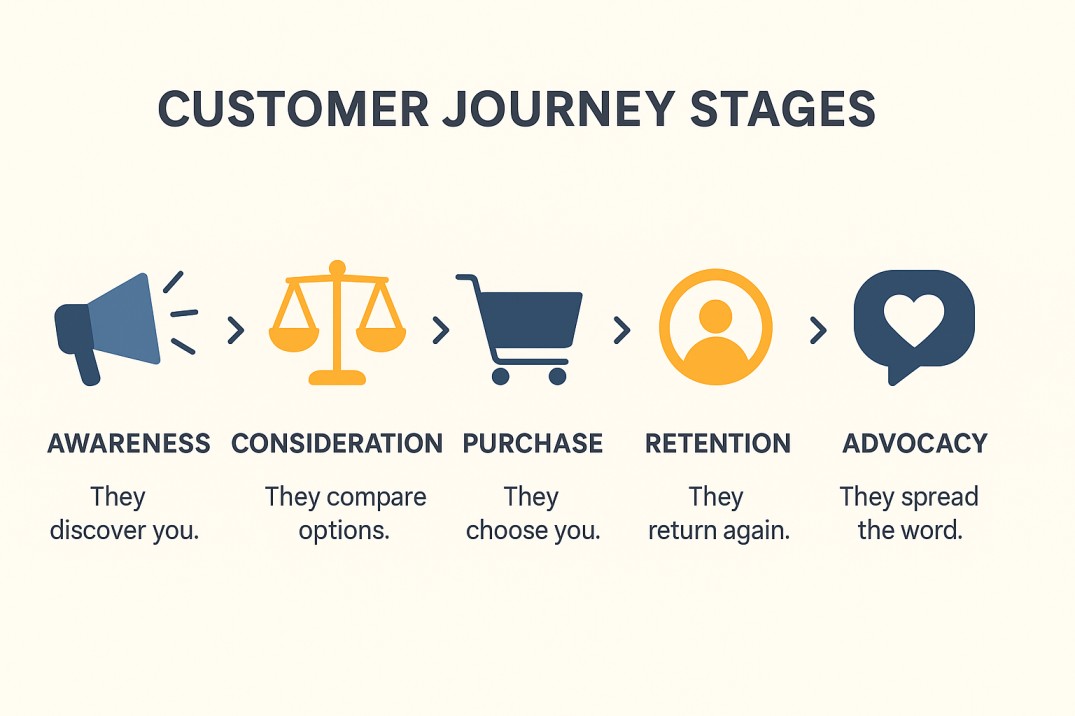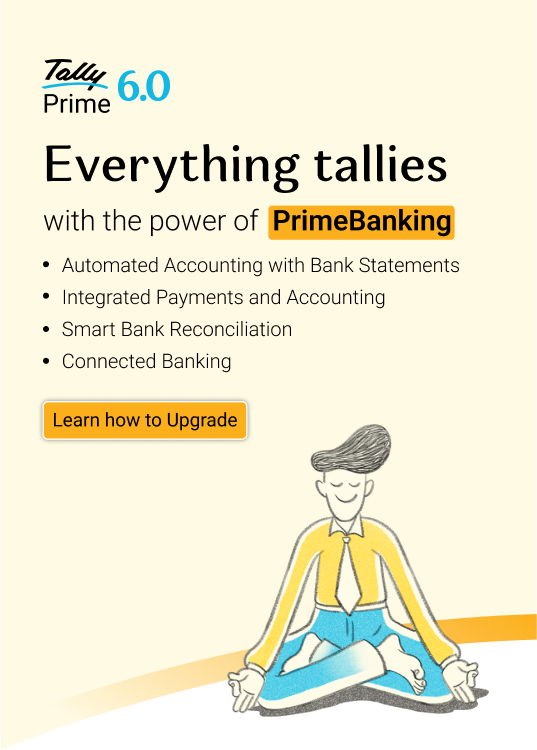You spend thousands on ads, build a beautiful website, and offer a genuinely great product, yet find that customers visit just once and never return.
Sounds familiar?
The problem often is not the product itself. It is what happens in between. The small but important steps a customer takes from the moment they first notice your brand to the point where they decide to buy can make all the difference. This path is filled with emotions, questions, and small moments that can encourage or discourage them. A slow website, a complicated checkout process, or an unanswered query can easily push them away.
Here is the interesting part. If you could see what your customers experience at every stage, understand what excites them, what confuses them, and where they hesitate, you could fix the weak spots, make the good moments even better, and turn casual visitors into loyal customers.
That is what customer journey mapping helps you do. It gives you a clear view of how people interact with your brand, from their very first click or conversation right through to becoming repeat buyers and recommending you to others. Once you have that insight, improving the experience becomes simpler and far more effective.
What is a customer journey?
The customer journey is the adventure your customer takes from the first spark of interest to the moment they decide to stick around as a loyal fan. It is not just about the buying moment. It is about the whole experience, both the good and the not-so-good, that shapes how they feel about your brand.
Think of it as the story of your relationship with a customer.
It usually includes:
- The first moment they notice your brand, such as an ad, a social media post or a recommendation from a friend
- Exploring your products or services, often by visiting your website, checking your social media, or reading reviews
- Deciding whether to buy after comparing you with competitors
- The actual purchase experience, including checkout or ordering process
- Receiving and using the product or service
- What happens after the purchase, such as customer support, follow-up emails or loyalty rewards
- Returning to buy again and recommending you to others
Both practical and emotional factors shape this journey. When these two sides work together, customers not only get what they want but also walk away feeling genuinely happy about choosing your brand.
What is a customer journey map?
A customer journey map is like getting an all-access pass to your customer’s adventure with your business. No more guessing what they are thinking or doing, you can see it all laid out in front of you.
Think of it as a storybook where every page shows what your customer does, how they feel, and where the magic happens, or where it might get a little bumpy or frustrating.
Here’s what makes it so valuable:
- It shows you the full chain of events that leads someone to buy from you
- It also reveals what might make them walk away before hitting that “buy” button
- You can spot the moments that matter most, good or bad
- It helps you understand your customer as a real person, not just a sale
In short, a customer journey map is your cheat sheet to creating better experiences that keep people coming back.
Why should businesses be aware of the customer journey?
If you do not understand your customer’s journey, you’re driving with your eyes closed. Sure, you might still reach somewhere, but it’s unfortunately not where you want to go.
Here is why awareness of the journey changes the game:
1. To find the real blockers
Every drop in sales doesn’t mean you need to slash prices or launch a big campaign. Sometimes, customers just get stuck. It might be a checkout form that takes too long, unclear delivery options, or too many steps to sign up. A customer journey map shows you exactly where people drop off, so you can fix those small but critical problems that stop sales from happening.
2. To personalise with purpose
Messages land better when they match the moment. A first-time visitor needs reassurance and proof. A comparer needs a side-by-side guide. A recent buyer needs tips and care. Journey awareness helps you send the right message at the right time, which increases clicks, conversions, and satisfaction.
3. To increase sales without big discounts
Many businesses rely on discounts to get more sales, but often, the real problem isn’t the price at all. It’s the small obstacles or frustrations that customers face. If your product pages answer all important questions, if checkout is quick, and if payment options are flexible, customers are more likely to complete their purchase without waiting for a sale. Small changes in the journey can drive big results.
4. To make smarter product decisions
Feedback is easier to read when you know where it came from. When you track how customers feel and act at different stages, you often uncover product-related issues you didn’t know existed. Maybe a feature is too hard to use, instructions aren’t clear or packaging is confusing. With these insights, you can make updates that directly improve satisfaction.
5. To build stronger customer loyalty
Mapping the journey helps you find opportunities to surprise and delight customers. Little touches like personalised offers, faster responses, or helpful tips can make people feel valued, and customers who feel valued are far more likely to come back.
6. To increase customer engagement
When you understand your customers’ needs and preferences at different stages, you can interact with them in more meaningful ways. This could be through helpful content, timely updates, or personalised recommendations that keep them interested and involved with your brand.
7. To reduce wasted effort and resources
When you know which parts of the journey work well and which don’t, you can invest your time and money where it matters instead of guessing and hoping for the best.
Key components of a customer journey map
A customer journey map is made up of a few important building blocks. Each one gives you valuable insight into what your customers need, how they behave, and what could make their experience better. By breaking the map into these key points, you can clearly see where things are working well and where small changes could make a big difference.
1. Customer persona
This is your starting point.
A customer persona is a detailed profile of your ideal customer, based on real data and insights. It covers things like age, location, goals, challenges, and buying habits. The better you know this “person”, the more accurately you can design a journey that truly works for them.
For example, a coffee shop might focus on Ahaan, a 28-year-old software developer who loves strong espresso, appreciates quick service, and needs free Wi-Fi to work between meetings.
2. Journey stages
These are the key steps your customer goes through when interacting with your business. Understanding each stage helps you see where customers might lose interest and where you can guide them forward.
Let’s break down what these stages look like:
- Awareness: The moment a customer first discovers your brand, product, or service.
- Consideration: When they weigh up their options and compare you with alternatives.
- Purchase: The decision-making moment when they buy from you.
- Retention: When they keep coming back for repeat purchases or interactions.
- Advocacy: When they actively recommend you to others and share their positive experience.

Let’s understand it better with an example.
In our coffee shop story, Ahaan first becomes aware (awareness) of the cafe through an Instagram post, considers(consideration) visiting after reading online reviews, makes his first purchase(purchase) with a cappuccino, keeps coming back for the strong espresso (retention), and eventually brings his friends along and leaves a positive review (advocacy).
3. Customer actions
Customer actions are the specific steps people take as they move through their journey with your business. These are not guesses or feelings; they are the actual behaviours you can observe or track. These actions could be small (clicking a link) or big (making a purchase), but together they tell a story about how people move through your world.
Some examples of customer actions include:
- Researching online: They might type your product name in Google, stalk your Instagram, or read reviews to see if you are worth it.
- Visiting your website or store: They’re curious enough to check you out, whether it’s clicking through your homepage or stepping into your shop.
- Comparing options: They look at what you offer and what your competitor offers to decide who gives them the most value.
- Taking the plunge: This could be adding to cart, booking a service, or signing up for a trial.
- Post-purchase engagement: Using the product, leaving a review, recommending it to others, or returning to buy again.
By clearly mapping out these actions for each stage of the journey, you can easily figure out where customers move forward smoothly and where they slow down or drop off.
4. Touchpoints
Touchpoints are all the places where your customer connects with your brand, whether online, offline, or somewhere in between. These points of contact can make or break their overall experience, so it is important to understand and improve them.
Common touchpoints include:
- Product packaging: The unboxing experience, how easy it is to open, or whether it feels premium.
- App notifications: Reminders, offers, or updates that pop up on their phone.
- Checkout counter experience: How smooth and friendly the process feels in-store.
- Delivery experience: The speed, packaging quality, and professionalism of the delivery person.
- Return or exchange process: How simple and stress-free it is when something needs to go back.
- Thank you messages: A personalised email, a handwritten note, or a loyalty coupon after purchase.
Each touchpoint is an opportunity to leave a good impression. The key is to make sure they all feel consistent and positive, so your customer’s journey flows smoothly.
5. Emotions
Your customer’s journey is not just about the actions they take. It is also about how they feel at each step. Emotions influence decisions far more than logic, and tracking them helps you understand why a customer moves forward or walks away.
You can think of it like the mood theme song of their journey:
- Excited when they first discover your brand
- Curious as they explore and compare options
- Confident when they believe they have found the right choice
- Frustrated if the checkout process feels complicated
- Happy when they receive what they expected or better
- Valued when you follow up with appreciation or exclusive offers
When you track emotions at each stage, you can identify the high points to build on and the low points that need improvement.
6. Pain points
If emotions set the mood, pain points are the parts of the journey where things get frustrating. These are the problems or roadblocks that stop customers from moving forward. Figuring out these problems early helps you fix them before customers give up.
Common pain points include:
- Complicated processes: Too many form fields or steps to complete a task.
- Slow response times: Waiting days for a reply can turn enthusiasm into irritation.
- Unclear information: Confused pricing, vague product descriptions or hidden charges.
- Inconsistent experience: Good in-store service but outdated online experience (or vice-versa).
7. Opportunities
While pain points show you what is going wrong, opportunities show what could go amazingly right. These are the moments where you can woo your customers, make them smile, and turn a good experience into a memorable one.
Opportunities come in many forms:
- Helpful features: A coffee shop could offer a mobile pre-order option to save waiting time.
- Personal touch: Sending a thank-you note or offering a birthday discount can make customers feel valued.
- Convenience: Offer multiple payment options or speed up the checkout process to make buying easier.
- Smart upselling: Recommending related products or services that genuinely add value.
How often should you update your journey map?
Your customer journey map isn’t something you draw once, frame on the wall, and forget about. It is more like a living diary of your customers’ experience because it changes as their needs, habits, and expectations change.
Think about it:
- Your products and services evolve
- New competitors show up
- Technology changes how people shop, search, or connect
- Your customers discover new problems you didn’t even know existed.
If you never revisit your journey map, you risk making decisions based on an outdated picture.
A good rule of thumb:
- Review your journey map at least once or twice a year.
- Update it right away if you launch a big product, change your sales process, or notice major shifts in customer behaviour.
- Pay attention to customer feedback, support tickets, and sales trends because they are often the first signs that your map needs an update.
Keeping your journey map updated means you are always designing your business around what your customers actually need right now, not what they needed ages ago.
How to create a customer journey map?
Creating a customer journey map isn't rocket science, but it does take a little detective work and some creativity. Think of it as stepping into your customer’s shoes and going for a walk through their whole experience with your business.
Here’s how you do it:
Step 1: Define your goals
Be clear about what you want to learn from the map. Are you aiming to reduce drop-offs? Do you want to boost customer satisfaction? Or are you focused on getting more repeat purchases?
Knowing your main objective will guide every step of the process.
Step 2: Build your customer persona
Decide which customer you are mapping the journey for. Think about their needs, preferences, and challenges. The more real this persona feels, the easier it will be to see the journey from their perspective.
Step 3: List the journey stages
Break the experience into different stages – Awareness, Consideration, Purchase, Retention, and Advocacy – that the customer goes through, from first discovering your business to becoming a loyal user. These stages will help you structure the map and understand where the most important interactions happen.
Step 4. Identify actions, touchpoints, and emotions
Look at what the customer actually does at each stage, where they interact with your business, and how they feel during those moments. This helps you find patterns in their behaviour and emotions.
Step 5: Highlight pain points and opportunities
Mark the places where customers might face problems or frustration. At the same time, note areas where you could create moments that surprise and delight them.
Step 6: Visualise it
Visualise your journey in a way that is easy to read and understand. This could be a diagram, a flow chart, or even a simple table. The goal is to make the information clear for everyone in your team.
Step 7: Gather feedback and iterate
Share your journey map with your team or even with customers if possible. Use their feedback to make improvements and keep refining the map until it truly reflects the customer experience.
Wrapping up
A customer journey map is your backstage pass to what customers truly feel and experience. By tracking their highs, lows, and “ugh” moments, you can create an experience they enjoy.
Keep it updated. Start small, focus on one customer at a time, and stay curious about every step they take. Add those quick wins, fix what’s frustrating, and double down on what delights.
Because in the end, the best journeys don’t just win customers, they turn them into loyal fans who can’t stop talking about you.










